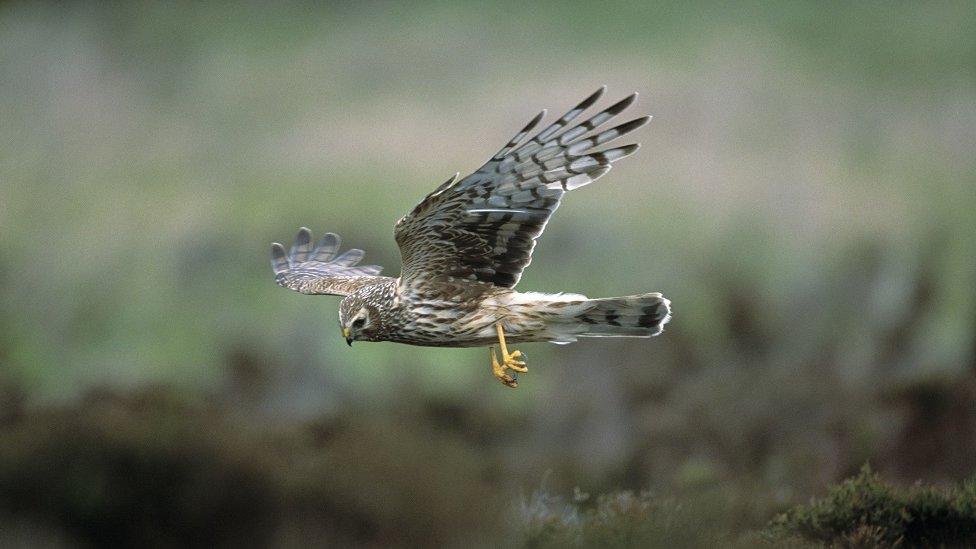Hen harrier Northern Ireland population dropped by 26%, study finds
- Published
- comments

The study found only 34 territorial pairs of hen harriers in Northern Ireland in 2023
The population of one of Northern Ireland's rarest birds of prey, the hen harrier, dropped by more than a quarter in seven years, a study suggests.
Only 34 territorial pairs were recorded in Northern Ireland in 2023 - a drop of more than 26% since 2016.
A 2011 independent government report estimated there should be about 150 pairs of hen harriers breeding in Northern Ireland.
Those behind the new survey said "things need to change".
The 2023 hen harrier survey was conducted in partnership with RSPB NI, Northern Ireland Raptor Study Group (NIRSG) and the Department of Agriculture, Environment and Rural Affairs (Daera).
'Things need to change'
Doctors Eimear Rooney and Marc Ruddock, survey co-ordinators from the NIRSG, said volunteers often found no birds in areas that once held the species.
"The hen harrier population in Northern Ireland is under immense pressure from a range of land management activities and human-mediated threats, leading to extensive and ongoing losses of suitable habitats and widespread disturbances at nesting and foraging habitats," the NIRSG said.
"The population has been displaced and disturbed for too many decades - things need to change."
Gregory Woulahan of RSPB NI said: "This is a drastic decline in numbers of hen harriers in Northern Ireland.
"One of the main reasons for this decline was loss of habitat.
"This, coupled with the landscape scale threats and pressures to the species, means we need a coherent, practical and policy-based restoration strategy for the needs of the hen harrier and its habitat.
"Unfortunately, this recent decline mirrors a similar population decrease within the Republic of Ireland in 2022."
Agriculture Minister Andrew Muir said he was concerned to learn of the declining population of the raptor.
He said action needed to be taken "to stop the decline of this iconic bird".
"But it can only be achieved through working in partnership with landowners, farmers, non-governmental organisations (NGOs) and all other stakeholders, to restore and enhance breeding habitats and appropriately manage activities which have the potential to cause disturbance and displacement," he added.